By Peter J. D’Adamo, ND, MIFHI
In its most simplified sense, stress is what you feel when the demands on your life exceed your ability to meet those demands. Your blood type is a critical component in the determination of your ability to meet the demands.
Exercise and Stress
Exercise is a mixed blessing when it comes to stress. A high level of physical fitness will definitely allow the nervous system to recover more rapidly from stress. A moderate amount of physical activity on a consistent basis will also tend to reduce the overall stress response. Because of this, exercise is often described as a panacea when it comes to moderating against stress or helping to de-stress. However, this is not always the case.
Everyone has an envelope of tolerance for exercise. Train within the envelope and exercise is a great method for managing or releasing stress. It acts as a safety valve to let off extra steam. Consistently pushing the limit of this envelope is where the most progress occurs when trying to improve performance. But what happens if you consistently push beyond this envelope, exceeding your tolerance levels and your ability to adapt? The classic manner to describe this is over-training. When you are over trained your performance declines. Does this sound familiar? It should because over training acts just like stress on your internal balance. Let’s take a look at two imaginary people and their exercise routine to get a better understanding.
Exercise Factors
Many factors interact to determine your envelope of tolerance for exercise. Factors like proper nutrition, hydration, rest, prior training, level of fitness, overall levels of stress in other parts of your life, and many other factors can influence your envelope. One of the factors that will influence this envelope is blood type.
In a simplified sense, physical activity, even when it is not exhaustive, usually leads to elevated blood levels of stress hormones like catecholamines and cortisol. However, following a period of training, most people will produce less stress hormones in response to exercise. This process could be described by the term ‘conditioning’. Generally speaking, elite or experienced athletes do not experience exercise internally as a stressful event, even if they slightly push past their normal training routine. They have conditioned their physiology, their nervous system and their endocrine system, and so are not experiencing even a high level of exercise as a stress.
This is why one can find a well-conditioned type A having a bigger envelope for exercise than a poorly conditioned type O. With exercise it is not a question of all or none. Blood type Os are welcome to do yoga, while many blood type As respond very well to lifting weights or aerobic activities. The area to focus on is your relative capabilities before you exceed your current envelope. All other factors being equal, this envelope is smallest for type A’s, but with proper “conditioning” a blood type A individual can excel in these more strenuous activities. On the other hand, a blood type O who is already in the exhaustion stage because of accumulated stress, should not consider intense exercise as currently being in their best interest.
The key factor in exercise is to train within the envelope so exercise can act as an anti-stress mechanism. Exercise past the envelope and you might actually be adding more stress into the equation. The key is moderation, and blood type helps set some of the limits to the envelope and can act as a guide to allow you to use exercise to improve your health.
Yoga and Stress: The blood type A safety valve
Hatha Yoga has become increasingly popular in western countries as a method for coping with stress and in my experience is an excellent form of exercise for Blood Type A, a recommendation of my father’s that traces its origins back almost four decades
Yoga has been the object of recent research in an attempt to understand the chemical basis for its effects on stress. One study was done on a group of women practicing yoga, compared with woman who were reading. The most significant aspect of this study were the differences found between both groups in psychological parameters—practicing yoga noticeably impacted mood and the ability to cope with stress. The women participating in yoga had higher scores in life satisfaction, higher scores in high spirits and were more extroverted. These same women also had lower scores in excitability, aggressiveness, emotionality and physical complaints. (67)
The second study looked at the effects of a three month residential living program consisting of yoga and mediation training program, and a low fat lacto-vegetarian diet (except for the dairy -very similar to an blood type A plan). The researchers found significant reductions in several cardiovascular risk factors including body mass index, total serum and LDL cholesterol, fibrinogen, and blood pressure. Urinary excretion of catecholamines (epinephrine and norepinephrine) was reduced, probably indicating less of these hormones were made or they were converted into their inactive breakdown products better, or both. This is a good indicator of stress reduction. They also noticed their excretion of cortisol through the urine increased significantly.
The last study looked at the effects of a 1 hour relaxation class consisting of yoga, a brief massage and progressive muscle relaxation. Many of the people in the class with higher levels of cortisol showed decreases in cortisol levels following the class.
Tai Chi: A Martial Art as a Blood Type A Safety Valve
Tai Chi, a type of martial art that is basically a form of moving meditation, has also been looked at for its anti-stress effects. Tai Chi clearly drops levels of salivary cortisol, positively influences levels of urinary catecholamines, drops blood pressure and improves mood after a stress-provoking event. Its effects were actually very similar to the anti-stress effects of taking a walk at 6 km/hr and were superior to just reading in dealing with stress.
An earlier of study of Tai Chi had reported a similar finding: Practicing Tai Chi acted as an anti-stress form of exercise. Subjects practicing Tai Chi felt less tension, depression, anger, fatigue, mood disturbance, confusion and anxiety. They correspondingly also felt more vigorous. Tai Chi also positively influenced stress hormones, increasing catecholamine excretion in urine, and decreasing salivary cortisol concentration.
Physical Exercise: The Blood Type O Stress Prescription
Unlike blood type A, blood type O individuals generally respond well to intense exercise (lifting weights, running, biking, swimming, aerobics) as a safety valve. But a word of caution, know your current limits.
Meditation and Visualization
Of all meditation techniques, ‘TM’ or transcendental meditation is the best studied for its anti-stress effects. Studies have shown that the amount of catecholamines in the urine decreases during and following TM meditation.
This would be of advantage to blood type O. However, of probably more significance, particularly for blood type A and B, it appears that regular practice of TM results in resting basal cortisol levels for many practitioners. Evidence indicates cortisol decreases during meditation, an effect especially evident in long-term meditators. However, the responsiveness of cortisol to stressors increased in the TM group when compared to control subjects. The combination of lower resting levels of cortisol, and better cortisol responsiveness to stress is a good indication that meditation practice can help move someone away from maladaption to stress.
It is quite likely that these anti-stress results of meditation are available from other forms of meditation as well. As an example, a form of Buddhist meditation has also been studied for its effects on stress hormones. It was found that after meditation, this type of meditation significantly reduced serum cortisol levels as well.
Meditation and visualization appear to be especially effective in type B and AB individuals, though it can be practiced by all blood types if they don’t add an additional layer of stress by being concerned if visualization doesn’t come readily.
The Chemistry of Stress
Under circumstances of physiological or emotional stress, the body protects itself by shifting the relative balance of our nervous system and by rapidly secreting specific stress hormones such as cortisol, adrenaline (sometimes called epinephrine) and noradrenaline (sometimes called norepinephrine). While these effects are not ideal over the long term, it is important to recognize that the complex physiological responses to stress are intended to reestablish homeostasis or balance. These responses are our means of adapting to a challenge.
Basically, the adrenal glands are an extension of the sympathetic nervous system. In response to stress these glands release several different chemicals into your blood stream. These messengers provide another level of communication between your nervous system, your hormonal system, and your other internal systems to provide further direction as to how they should act in response to stress.
Catecholamines
The first class of the messenger molecules made by the adrenal glands are catecholamines. There are two catecholamines released from the adrenals in response to stress: Epinephrine (commonly called adrenaline) and norepinephrine. Clearly this response is very useful under some circumstances. But a prolonged duration of time in this mode will come at a cost.
Although blood type A responds to stress by releasing a lot of adrenaline, they can eliminate it very quickly. Blood type O can actually have more problems with catecholamines, when they do produce a large amount in response to stress, it can take them a while to eliminate them and their effects.
Cortisol
Another critical hormone to consider is cortisol which is also made and released from your adrenal glands. Cortisol is in a class of chemicals called glucocorticoids. Most people have actually used a glucocorticoid at some point in time. Medicines like hydrocortisone or prednisone are examples of these glucocorticoids.
While the catecholamines can be thought of as more of a short-term solution to stress, cortisol is more of a long-term response. Cortisol is a catabolic hormone, meaning it will function to break down muscle tissue and convert the proteins from this muscle tissue into energy. This hormone is often portrayed as the enemy of body builders since it acts to break down their hard-earned gains in muscle mass.
Cortisol is considered to be such a reliable indicator of stress upon a system that many physiologists define stress as an event that elicits increased levels of cortisol. These include exposure to cold, starvation, bleeding, surgery, infections, pain or injuries, and too much exercise just to name a few. Even your mental state can induce the increase of this hormone. A critical, but often overlooked, piece of the puzzle influencing the release of cortisol to stress is actually your blood type. But before looking at this connection lets explore cortisol and stress a bit further. It is in the arena of cortisol that blood type A’s are hit the hardest and blood type O’s tend to be spared.
Blood Type and Stress
In pigs, blood type is an accurate predictor of susceptibility or resistance against something called ‘porcine stress syndrome’. While no one would argue that a pig’s susceptibility to stress can be extrapolated to humans the question still remains: If blood type can impact a pigs susceptibility to stress, could it not influence our stress response? Several researchers have actually looked at the connection between blood type and the response to stress in human subjects. The findings have been quite consistent; the evidence quite clear. Just like pigs, our response to stress is influenced by and linked to blood type. Our ABO blood type plays a significant role in the types of stress hormones we produce, their resting levels, the way we respond to stress, and how quickly they recover from stress.
One rather imaginative study looked at the levels of cortisol made in response to venisection (getting blood drawn.) The researchers considered very act of getting your blood drawn to be a mild physiologic stress, and then simply went about analyzing what was in the vacuum blood draw tube!
They found that blood type A individuals tend to over-respond to even minor stress. This response can be measured by increases in cortisol and catecholamines (adrenaline being a prime example of a catecholamine). While all blood types will respond to stress by secreting more cortisol, blood type O individuals are on the low end of the scale as compared with more stress sensitive blood type A’s. They are the least likely to have a pronounced reaction to stress; the level of cortisol and adrenaline they make in response to the same stress is much less than that of a blood type A. Thus in type O’s who get stressed out, cortisol rises almost insignificantly, whereas in type A it almost doubles.
Blood types B and AB lie between these extremes when it comes to dealing with stress. In general type B’s respond to stress closer to the A end of the continuum, while AB’s slide more towards the type O response end of the spectrum. One observation about blood type B and cortisol production following stress was that although they fell on average between blood types A and O, their response was much more individualistic: The range of responses for type B included the highest and and lowest of all the blood types. Though their cortisol levels ‘averaged’ between blood type A and blood type O, individually, type B’s had both the highest and lowest levels.
In addition to having this tendency to over respond to stress by generating an excess of cortisol, blood type A has chronically higher cortisol levels floating around in their blood all the time to start with. Again we find blood type O’s on the far end of the spectrum: they have the lowest amount of cortisol floating around in their blood. One last interesting point is that blood type O’s seem to be able to lower cortisol levels much more quickly and dramatically by simply relaxing and imagining a pleasant scene for 30 minutes than their blood type A counterparts.
Basically what this means is that if you are type A, you’re walking around all the time with your physiology in high stress response state. Blood type A doesn’t get as much payback as the other blood types in terms of stress reduction when they practice stress reducing techniques. When it comes to reducing stress levels, blood type A has to do more, for less return.
Blood type A also makes more adrenaline in response to stress than the other blood types. Fortunately, blood type A also has the greatest ability to break down or eliminate catecholamine hormones like adrenaline. An O requires a lot more to knock them off kilter and cause them to respond in a very stressful manner. However, once they respond, it will usually also take them longer to normalize or recover from stress.
This is partially due to the inability of type O breakdown catecholamines like adrenaline as quickly as types A or B. It is not that they always have more adrenaline floating around their blood; they do not appear to break down catecholamines as effectively as the other blood types.
An enzyme called monoamine oxidase (or MAO for short) is responsible, for among other things, the breakdown or inactivation of adrenaline and noradrenaline. When measuring the activity of MAO in platelets, research has shown that type O individuals have the lowest activity of this enzyme. The lower activity of this enzyme found in Type O’s will make it harder for them to break down an excess of catacholamines. Again with respect to MAO, we find that A’s and O’s are on the opposite ends of the spectrum. Type A’s tend to have the highest activity.
This is especially the case for blood type A’s. They don’t seem to be able to get their resting levels of cortisol down to the same low level as the other blood types. So, although relatively speaking they recover from stress, from a comparative view they are often still in a stress response mode when compared with people from blood types B, AB, and O (again there is a continuum here with type B’s and AB’s responding in the middle). Prolonged stress ultimately then moves us into a stage where we are forced to accommodate to maintain balance in the face of the continued challenges. This is the “reaction” stage. But as mentioned previously, at some point we have a point, beyond which we can no longer make any more accommodations. Once we pass this demarcation point, we enter this third stage. It is important to note that Selye’s third stage is not characterized by an inability to create stress hormones, but appears to be characterized by chronic excess of the messenger molecules of stress.
Even when an emergency is not present, the body continues to act as if it is under stress resulting in a collective breakdown of various aspects of our health. This is the blood type A ‘Achilles’ heel,’ but the other blood types often move themselves here.
© Peter J. D’Adamo 2008-2010


